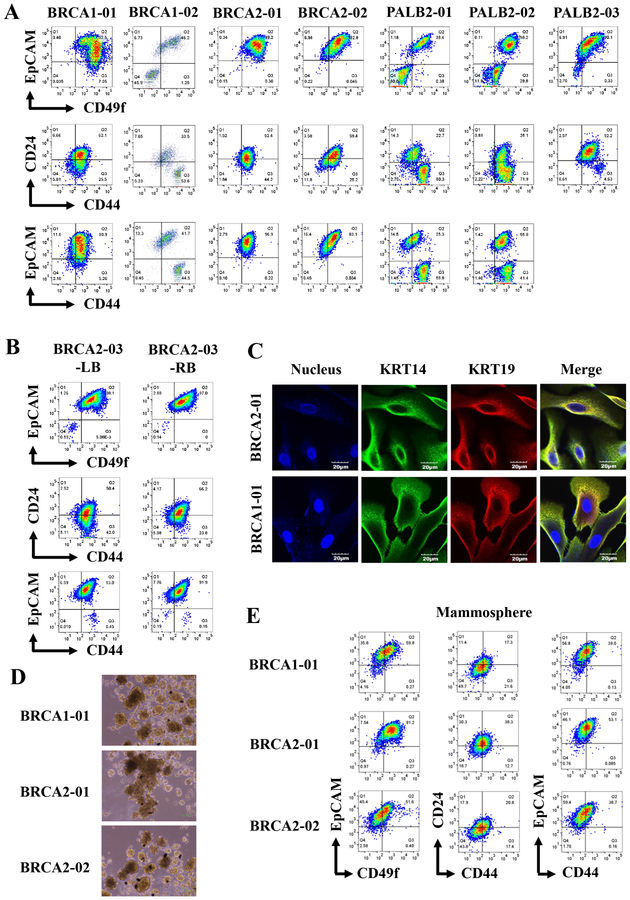Figure 2:
Breast epithelial cells with luminal progenitor characteristics can be grown from breast cancer high-risk carriers. A) Breast epithelial cells from BRCA1, BRCA2, and PALB2 mutation carriers show variable subpopulation of cells based on CD49f/EpCAM, CD44/CD24 and CD44/EpCAM staining patterns. B) Breast epithelial cells propagated from randomly selected regions from two breasts of a BRCA2 carrier show similar phenotypes based on CD49f/EpCAM, CD44/CD24 and CD44/EpCAM staining patterns. C) BRCA1 and BRCA2 mutant breast epithelial cells are enriched for KRT14+/KRT19+ luminal progenitor cells as determined by immunofluorescence. D). BRCA1 and BRCA2 mutant cells form mammospheres. E) Cells in mammospheres show different degree of differentiation compared to cells grown in 2D culture. For example, CD49f-/EpCAM+ cells, which are considered differentiated luminal cells, increased under mammosphere condition compared to 2D culture as shown in A.

